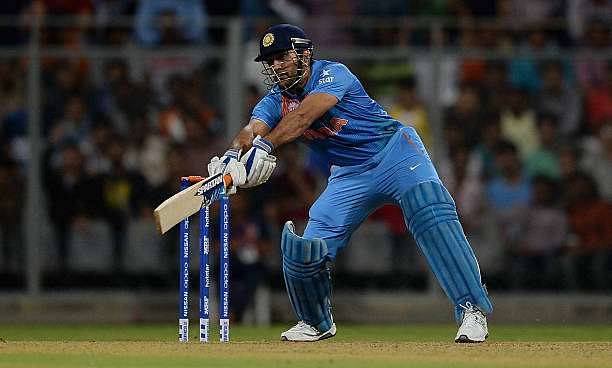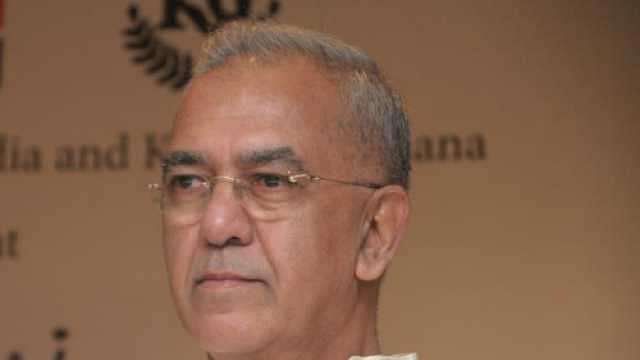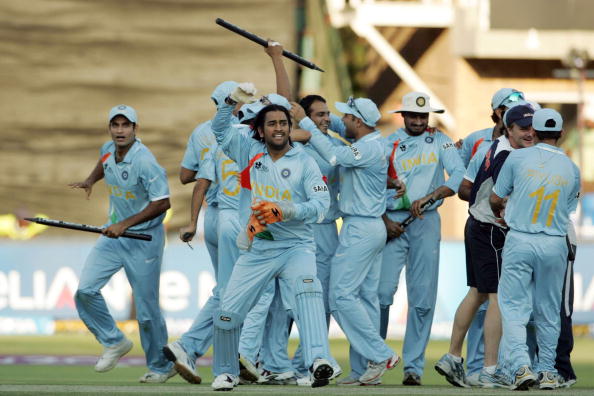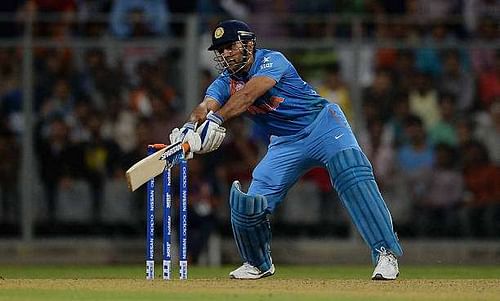
MS Dhoni: The real untold story
On a sunny afternoon in Jamshedpur, a cricket match was in progress. In this game, all 22 players played more with hope than anything else, knowing not who was even watching or if anyone even cared about their dreams of playing for India. With long hair and broad shoulders, and not many balls left to impress, a young man strode up to the crease.
He played shots not known to Indians at the time, and the generally scrawny bunch are amazed by the aura of this stranger. Umpires and birds cowered as he launched pasty medium pacers into the adjacent parks with his scrappy unorthodox technique the nation would get to know him for.
Someone was watching. Former Bengal captain PC Podar was, in his role as a Talent Resource Development Officer. In the early 2000s, TRDOs were a part of a scheme to scout talent from the places selectors had no time or interest to bother going to. They were former first class veterans, like Podar, and worked under former India skipper, Dilip Vengsarkar. It was Podar along with former Bengal captain, Raju Mukherjee recommended that MS Dhoni, whom they listed as a clean striker with good temperament, be called to the NCA in Bangalore. The rest is history.
Extra cover: Who said what: Cricketers wish MS Dhoni on his 36th birthday
Grassroots cricket in India is a mass of poorly put together tournaments, haphazard matches and poor facilities, exponentially more chaotic the further one gets from the city. What is even worse is the way in which state associations try to sift through the various leagues, clubs and tournaments that exist in youth cricket.
Because politics and cricket are arranged married in a sort of weird, unhealthy, when-will-they-get-a-divorce relationship, cricket is run by politicians with an iron fist. Decisions are made from the bottom to the top for votes. Lives are decided by caste, religion and regional affinities. How is it that in a billion people, all of whom are addicted to the sport, unearthing talent is so difficult. It’s because corruption and nepotism runs rampant. It’s all about who you know. To succeed, every player needs a helpful uncle or a brother-in-law who knows someone.
And even when it’s all above board, selectors barely look at more than scorecards to make their decision. Mistakes are rampant, it’s an epidemic of incomplete information. With no reports on pitches, the opposition’s bowling attack and a general lack of coverage in rural areas, it is a system rigged to fail.

In an interview with Sportskeeda, Dr Makarand Waingankar, the man behind the Talent Resource Development Wing, told us the story of the system’s naissance, its merits and the reasons for its success. In 2001, while working as a consultant with the Karnataka State Cricket Association, he noticed that rural talent had virtually no way of getting found.
He developed the program to unearth this unknown talent. It was a resounding success and it was the TRDW that found Vinay Kumar, Karnataka’s current captain. Late BCCI President, Jagmohan Dalmiya, a friend of Waingankar’s, was interested in expanding the program nationwide, and in 2002, the TRDW was implemented across the nation.
Extra cover: Where to from here, MS?
The way the system worked was simple: Every BCCI-affiliated youth match that happened in rural areas was attended by a Talent Resource Development Officer, who was essentially a scout. He watched the game, filled out an electronic form and if a player was particularly noteworthy, he recommended them to the NCA. When they got to the NCA, TRDW chairman, former India skipper, Dilip Vengsarkar, would conduct a round of selection. Players were often looked at more than once, in order to make the process as fair and consistent.
The system focused on youth cricketers, to be able to develop them by the time they were old enough to play for the country. It began a trend of players going to the international stage from the NCA to the Under-19 to the A team and then to the national team. Of the Indian 2011 World Cup squad, eight members were from the TRDO system, including: Suresh Raina, Irfan Pathan, MS Dhoni, Piyush Chawla, RP Singh and S Sreesanth.
It wasn't only Dhoni who emerged from TRDO system but there were 8 from the system who were part of the 2011 WC winning team
— Makarand Waingankar (@wmakarand) 7 July 2017
Had the TRDO system not been in place for Dhoni, he would have been overlooked, having not scored enough runs, without the selectors having looked at his record in context to when he came to bat. The Cricket Association of Bengal was backing Deep Dasgupta for the India wicketkeeping job, but Dhoni, through the TRDO system, soon knocked the door down, and didn’t look back. Waingankar’s only regret is not being able to implement the system six years earlier, so Dhoni could have been fast-tracked earlier in his career.
Since 2006, after Jagmohan Dalmiya completed his term, the system fell into disrepair due to a change in the BCCI’s administration. Match referees were to do the job of the TRDOs’ jobs, and they were often corrupt and untrained to do the job they needed to. The NCA took on the role of grooming young players, but did not have the scope of the TRDW.

Scouts in sport are as important as any of the high-performance academies. By finding talented young players from outside the system, it’s making use of India’s huge population. For football clubs in Europe, scouting is a big part of their budgets and scouts scour Europe to find the most remote of footballing talents. A similar thing needs to happen in cricket in India, for the grassroots to keep pumping out talent like it did in the 2010s.
India never went through the terrible transition phase that most countries faced after their biggest stars retired, and a part of that was to do with the TRDW’s unearthing of talent and developing it five years before the exodus of Dravid, Sachin and Ganguly. Now that India is soon approaching a critical point like it did in 2012-2013, it is time for the TRDW to establish itself again.
This time, there is a cheaper way to do it. Clubs like KKR are willing to create TRDWs to find young talent, and did in 2009, using Waingankar’s help. Competitiveness between different teams creates big budgets. Young talent, like Washington Sundar, will be found, drafted and put in the domain of national selectors (for limited overs stuff, at least), before they have gotten into the first-class circuit.
It’s time that cricket met the needs of a billion people. The bias against players on purely political grounds cannot continue any longer, and the BCCI and its state associations must implement a fair and unbiased TRDW before it is too late, and I suspect it already is.
